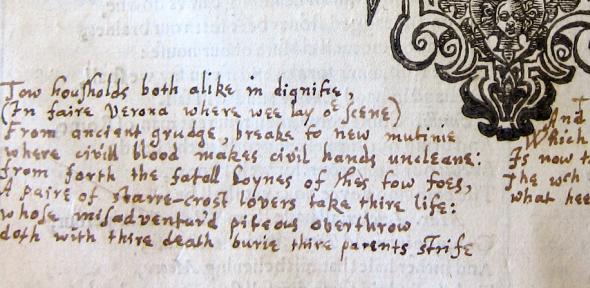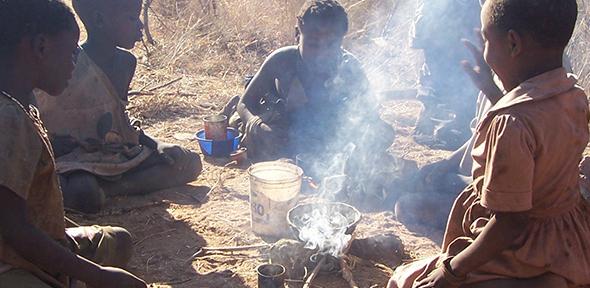Politics takes centre stage at the Festival with sessions on everything from the future of democracy, the US elections, Brexit, the rise of populism, power politics in the Far East and growing schisms in the Balkans.
The Festival, which runs from 14th to 27th October, celebrates the enormous impact of arts, humanities and social sciences on our daily lives and encourages lively discussion about many of today's most challenging global issues. With 273 events spanning two weeks, most of them free, the Festival - now in its 12th year - attracts thousands of people to Cambridge.
This year’s event includes political experts such as Professor David Runciman, author of How Democracy Ends, a live edition of the chart-topping podcast Talking Politics and leading politicians David Lammy and Ed Miliband.
David Lammy will be in conversation with journalist Gillian Joseph for the Annual Race Equality Lecture [14th October] about his personal journey and how race and racism has shaped his life as well as a variety of topics including: how racism manifests itself in organisations’ today; the barriers to career opportunities faced by BAME staff and how to overcome them; the lack of BAME role models in senior positions; and how to increase BAME access and representation in leading professions.
Ed Miliband will be speaking with Emily Shuckburgh, Director of the University of Cambridge Carbon Neutral Futures Initiative, about Environmental Justice and how strong action in the UK can be translated into global action through visionary leadership? [17th October]
One of the biggest political issues of current times is surely the future of democracy in a world of constant upheaval, rising populism and a return to ‘strong man’ leadership.
In How do democracies change? [23rd October] Professor Runciman** highlights how Brexit has shown how easy it is for contemporary democracies to get stuck. He will ask how easy is it to reinvent the way they work once we can see that they are no longer working and will explore the challenge of turning around failing democratic institutions without undermining the idea of democracy itself. Runciman is Professor of Politics and will be launching the Centre for the Future of Democracy at the Bennett Institute in Cambridge in the near future.
He says: “On the one hand Brexit has shown us that our democratic institutions are pretty robust. I don’t think we are at risk of seeing democracy collapse. On the other, it has shown that they aren’t working well at all. They depend heavily on their adaptability and they haven’t adapted successfully to this challenge – if anything, they have frozen our divisions in place. What’s most striking is how little thought seems to have been given by politicians to whether the institutions are capable of doing the things they ask of them. It’s possible to blame individual politicians for particular mistakes: maybe Cameron shouldn’t have called the referendum because he lost it; maybe May shouldn’t have called the election in 2017 because she lost her majority. But it’s also true that the bigger mistake was to believe the British system could accommodate a referendum or that an election could be used to force the issue of Brexit after it had got stuck in parliament. Some of what’s gone wrong is political misjudgement but some of it is simply institutional inertia. Rather than taking a gamble and then hoping the institutions can deliver, maybe we should reform the institutions first.”
Professor Runciman will also be co-hosting, with fellow politics expert Professor Helen Thompson, a live edition of Talking Politics [16th October]. Supported by the London Review of Books, the hosts will be joined by a panel of political experts to explore a wider view on current events at a particularly momentous point in time as we head towards 31st October.
Other events relate to changing trends in British politics, including one linked to a new book reappraising the New Labour years.
In Why Tony Blair was right: the New Labour revolution 25 years on [26th October] Dr Richard Carr, Senior Lecturer in History and Politics at Anglia Ruskin University and author of the new book March of the Moderates, will take a new look at New Labour’s achievements. Using newly unearthed archives and interviews with key players, his book investigates the relationship between the administrations and sheds new light on big set pieces such as the Good Friday Agreement in Northern Ireland, the handover to George W. Bush and the controversial Iraq War. He says: “Those seeking new perspectives on Blair’s partnership with George W. Bush and the Iraq War will find much of interest, as will those seeking a more positive take on the New Labour years.”
Meanwhile, in The changing British voter: taking back control? [19th October] communications expert Justin Jackson from the Department of History at the University of Cambridge and Francesca Granelli from the Department of War Studies at King’s College London will look at how voter patterns have changed over the last 70 years in the light of the sudden rise of new parties, such as the Brexit party, and splits in traditional parties. They will offer three perspectives – behavioural, socio-economic and political – that provide a compelling picture of how the British voter has changed in a few generations.
Several events will cover world politics and conflict:
In The 2020 presidential election: ideological and institutional change in American politics an expert panel will discuss whether President Trump is the cause or a symptom of the upheaval going on in US politics. Taking on topics foreign and domestic, the panelists will cover a sweeping set of issues including the breakdown of the neoliberal consensus, rising polarisation and ideological divisions in both parties and the future of foreign policy in a period of relative decline and great power competition. [19th October]
In Reordering the Balkans [19th October] Timothy Less, director of the Nova Europa consultancy on Eastern Europe, will discuss recent events in the region, such as open discussions between Serbia and Kosovo’s leaders about an exchange of territory along ethnic lines, with the apparent approval of the United States and the European Union, proposals to unify Albania and Kosovo over the next decade and ongoing conflict between Serbs and Croats in Bosnia. Less will ask how long the region’s current borders can hold, what the map will look like in the future, whether the region make a transition to nation statehood without another conflict and what the response of the outside powers should be.
What does the future hold for China in a world of global trade wars, rising concerns about human rights and regional expansion in the form of the Belt and Road Initiative? China: power politics in the Asian age [23rd October] is a panel discussion with historian Professor Hans van der Ven, human rights expert Professor Eva Pils, Agnes Chong, visiting lecturer at POLIS, and Bhavna Dave from the School of Oriental and African Studies, chaired by Professor Rana Mitter from the University of Oxford.
Other events will seek to look at the ongoing imprint of past conflicts.
Is it possible to forgive and forget after major national traumas? [22nd October] will discuss how to build lasting peace after devastating division, from the civil war in Burundi and apartheid in South Africa to Cold War politics in Germany and the Sino-Japanese war. With Gates Cambridge Scholar Alice Musabende, Hanno Balz, DAAD Lecturer in Modern German and European History, and John Nilsson-Wright, Fuji Bank University Senior Lecturer in Modern Japanese Politics and International Relations at the University of Cambridge and Catherine Jenkins, Chair of the Centre for Law & Conflict at the School of Oriental and African Studies. Chaired by Devon Curtis, Senior Lecturer in the Department of Politics and International Studies at the University of Cambridge.
In the film Teatro de Guerra/Theatre of war six veterans [three British and three Argentinian] from the Malvinas/Falklands War of 1982 share their memories and re-enact their experiences together. One of the protagonists of the film, Lou Armour, will be joining after the screening for a Q&A session, in conversation with Erika Teichert from the Centre of Latin American Studies (CLAS), University of Cambridge.[16th October]
In Maroon Nation: the history of revolutionary Haiti, Johnhenry Gonzalez discusses his new book on the history of Haiti, how the country went from the most profitable slave colony to the site of the only successful slave revolt in modern times and ongoing claims for the repatriation of national treasures. [17th October]
*The Cambridge Festival of Ideas programme is available in hard copy around Cambridge and online here. Booking lines are open from 11am-3pm from 23rd September.
Follow the Festival on Twitter at https://twitter.com/camideasfest and on Facebook at https://www.facebook.com/cambridgefestivalofideas?fref=ts
**Read Professor Runciman’s Q & A about his event here.
For more information, contact Mandy Garner on 07789 106435 or email mandy.garner@admin.cam.ac.uk. Picture credit: The British Parliament and Big Ben by Maurice from Zoetermeer, Netherlands ℅ Wikimedia Commons.































